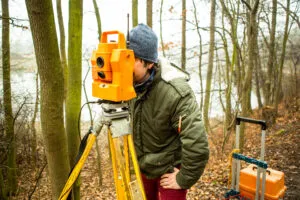
Maps have come a long way from paper to pixels, transforming how we navigate and understand our world. The shift from static maps to dynamic maps has revolutionized the way we interact with geographical information, offering real-time updates and personalized experiences. This evolution has a significant impact on various industries, from transportation and logistics to urban planning and tourism.
In this article, we’ll explore the key differences between static maps and dynamic maps. We’ll examine the strengths and limitations of traditional static maps, delve into how dynamic maps are changing the game, and provide a comparative analysis of both types. By the end, readers will have a clear understanding of when to use each map type and how they can leverage these tools to enhance their navigation and spatial awareness.
The Evolution of Mapping Technology
Traditional Paper Maps
For thousands of years, humans have relied on maps to navigate and understand their surroundings. The earliest forms of cartography date back to ancient civilizations, with simple sketches on clay tablets by the Babylonians and delicate maps on silk from China. These early maps were often artistic representations, focusing on smaller areas of interest such as cities or trade routes. While they may appear crude by modern standards, they served their purpose of recording important locations and providing a general idea of the landscape.
As cartography advanced, maps became more sophisticated. The Greeks and Romans made significant contributions to the field, culminating in the work of Claudius Ptolemaeus (Ptolemy) in 150 AD. His treatise, Geographia, revolutionized mapmaking by introducing mathematical rules and including longitude and latitude lines. This scientific approach to cartography laid the foundation for future advancements in the field.
Digital Static Maps
The transition from paper to digital maps began in the 1960s and 1970s when computer scientists started developing software to create and manipulate map images. This shift marked a significant milestone in the evolution of cartography. The development of Geographic Information Systems (GIS) in the 1980s further transformed the field, allowing researchers and planners to map and analyze complex spatial data in ways previously impossible.
The rise of the internet in the 1990s made digital maps more accessible to the general public. Companies like MapQuest and Google began offering online mapping services, allowing users to create customized maps and obtain driving directions. These static digital maps represented a significant improvement over their paper counterparts, offering greater detail and easier updates.
Rise of Dynamic Maps
The advent of dynamic maps has revolutionized how we interact with geographical information. Unlike static maps, dynamic maps offer real-time updates and personalized experiences. They allow users to zoom in and out, pan across regions, and access additional layers of information such as traffic updates, weather conditions, and points of interest.
The development of smart technologies and the Internet of Things (IoT) has made dynamic mapping technology critical to many digital transformation projects. These interactive maps provide a wealth of information tailored to individual needs, making them far more versatile and user-friendly than their static predecessors.
Dynamic maps offer several advantages over static maps. They provide real-time data, allowing users to make informed decisions based on current conditions. They also offer customization options, enabling users to tailor their experience based on preferences. The interactive nature of these maps engages users more deeply, enhancing the overall navigation experience.
As technology continues to advance, we can expect to see even more sophisticated mapping tools that will further revolutionize how we interact with our environment. The evolution from static to dynamic maps represents a significant leap forward in our ability to navigate and understand the world around us.
Static Maps: Strengths and Limitations
Advantages
Static maps offer several benefits that make them a valuable tool in certain situations. One of their main strengths is their simplicity and reliability. These maps come in the form of printed or digital images, such as JPEG or PNG files, displaying a fixed area or information that cannot be changed by the user. This unchanging nature makes static maps an excellent choice for providing a clear snapshot of an area, helping users get their bearings quickly.
Another advantage of static maps is their versatility in terms of placement and size. They can be installed on walls, windows, floors, or even suspended from ceilings, allowing businesses to make strategic use of various spaces within their premises. This flexibility enables companies to position their maps for maximum visibility and impact.
Static maps are also known for their durability and cost-effectiveness. Many static map materials are weather-resistant, making them suitable for both indoor and outdoor use. This durability ensures that the information remains visible and legible for an extended period, even in challenging environments. For businesses with limited budgets or stable advertising needs, static maps can be a cost-effective solution for long-term, consistent messaging.
Disadvantages
Despite their advantages, static maps have some limitations when compared to dynamic maps. The most significant drawback is their lack of interactivity and real-time updates. Once a static map is created, it cannot be easily modified or updated without reprinting or recreating the entire map. This can be problematic in situations where information changes frequently or when users need to interact with the map to get more detailed information.
Static maps also lack features like zoom functionality and customization options, which are common in dynamic maps. This limitation can make it difficult for users to explore specific areas in detail or tailor the map to their individual needs. Additionally, static maps cannot provide real-time data such as traffic updates or current weather conditions, which can be crucial for certain applications.
Ideal Applications
While dynamic maps have become increasingly popular, static maps still have their place in various scenarios. They are particularly well-suited for situations that require a fixed image or printed material. For example, static maps are often used in:
- Printed materials: Brochures, flyers, and guidebooks benefit from the simplicity and clarity of static maps.
- Wayfinding signage: Indoor and outdoor navigation systems in buildings, parks, or campuses often use static maps to help visitors orient themselves.
- Historical or educational displays: Museums and educational institutions may use static maps to illustrate historical events or geographical concepts.
- Emergency evacuation plans: Static maps are commonly used to display evacuation routes and safety information in buildings.
In these applications, the reliability and durability of static maps make them an ideal choice. They provide a consistent reference point that works both online and offline, offering a clear visual representation of geographical information without the need for digital interfaces or real-time updates.
Dynamic Maps: Revolutionizing Navigation
Dynamic maps have transformed the way we interact with geographical information, offering a level of interactivity and real-time updates that static maps simply cannot match. These advanced mapping solutions have revolutionized navigation and spatial awareness across various industries and applications.
Key Features
One of the most significant features of dynamic maps is their ability to provide real-time updates. Unlike static maps, which present fixed information, dynamic maps can display data that changes frequently and continuously. This capability has a significant impact on various sectors, such as weather forecasting, traffic management, and emergency response. For instance, traffic maps can show current congestion levels, allowing users to make informed decisions about their routes.
Another crucial feature is user interactivity. Dynamic maps enable users to zoom in and out, click on specific features for more details, and filter data to view particular information. This level of interaction enriches the user experience, making the map more engaging and personalized. Users can explore areas of interest in detail or get a broader overview, depending on their needs.
Data visualization is another key aspect of dynamic maps. They have the ability to transform complex datasets into understandable visuals, making it easier for users to grasp intricate information quickly. For example, heat maps can illustrate population density, while color gradients can demonstrate temperature variations. Multiple layers can be used to present various types of data simultaneously, providing a comprehensive view of the information at hand.
Benefits
The benefits of dynamic maps are numerous and far-reaching. They offer a more engaging and interactive experience compared to static maps, keeping users on websites longer and potentially improving SEO through reduced bounce rates. The real-time updates and data visualization capabilities of dynamic maps make them invaluable tools for decision-making in various fields, from urban planning to disaster management.
Dynamic maps also enhance accessibility. They can provide voice-guided navigation for the visually impaired and show detailed information about facilities like bathrooms, elevators, and emergency exits. This makes them particularly useful in large indoor spaces with complex infrastructure, helping users navigate efficiently and reducing the stress of getting lost.
Common Uses
The applications of dynamic maps are diverse and continually expanding. In the realm of public safety, they assist agencies in understanding crime and fire incident patterns, helping to determine optimal locations for new stations and evaluate the effectiveness of current services.
For businesses, dynamic maps can be powerful marketing tools. They can showcase products or services in a geographical context, helping potential customers visualize their options. In the real estate industry, for example, dynamic maps can provide virtual tours of properties and neighborhoods, enhancing the house-hunting experience.
In the field of urban planning, dynamic maps play a crucial role in visualizing and analyzing complex spatial data. They can help planners understand projects on a deeper level, providing immediate answers to complex questions about urban development and resource allocation.
Dynamic maps have also found significant use in the travel and tourism industry. They can help visitors explore parks, trails, and attractions, combining text, multimedia, and interactive map features to create engaging and informative experiences.
In conclusion, dynamic maps have revolutionized navigation and spatial awareness across numerous sectors. Their ability to provide real-time updates, facilitate user interaction, and visualize complex data makes them invaluable tools in our increasingly digital world.
Static vs Dynamic Maps: A Comparative Analysis
User Experience
The user experience of static and dynamic maps differs significantly. Static maps provide a simple, straightforward view of a specific area, making them easy to understand at a glance. They serve as reliable references that work both online and offline, offering a clear snapshot to help users get their bearings quickly. However, static maps lack interactivity and real-time updates, which can limit their usefulness in certain situations.
Dynamic maps, on the other hand, offer a more engaging and interactive experience. They allow users to zoom in and out, pan across regions, and access additional layers of information. This interactivity enhances the overall navigation experience, keeping users on websites longer and potentially improving SEO through reduced bounce rates. Dynamic maps also provide real-time updates, allowing users to make informed decisions based on current conditions.
Functionality
The functionality of static and dynamic maps varies greatly. Static maps are limited in their capabilities, primarily serving as fixed images that cannot be easily modified or updated. They lack features like zoom functionality and customization options, which can make it difficult for users to explore specific areas in detail or tailor the map to their individual needs.
Dynamic maps, however, offer a wide range of functionalities. They can provide real-time traffic updates, weather conditions, and points of interest. Dynamic maps also support features like routing options, search modes, and autocomplete services. This enhanced functionality makes dynamic maps invaluable tools for decision-making in various fields, from urban planning to disaster management.
Cost Implications
The cost implications of static and dynamic maps can vary significantly. Static maps are generally more cost-effective for businesses with limited budgets or stable advertising needs. They can be a long-term, consistent messaging solution, especially when used for printed materials or physical displays.
Dynamic maps, while offering more features, can be more expensive to implement and maintain. They often require more complex algorithms and mechanisms, which can result in higher computational overhead. However, for businesses with high usage levels, certain dynamic mapping platforms can offer significant cost savings compared to more expensive options like Google Maps APIs.
Scalability
Scalability is a crucial factor when choosing between static and dynamic maps. Static maps may limit growth opportunities in the long term, as they cannot be easily updated or expanded. If a business wants to grow or adapt its mapping solution, it may need to create entirely new static maps, which can be time-consuming and costly.
Dynamic maps, conversely, offer greater scalability. They can efficiently distribute workloads across a variable number of servers, accommodating changes in system size or capacity. This makes dynamic maps well-suited for environments with varying and unpredictable workloads. Additionally, dynamic maps can be easily updated through content management systems, allowing businesses to grow and adapt their mapping solutions as needed.
Conclusion
The evolution from static to dynamic maps has had a significant impact on how we navigate and understand our world. Static maps continue to have their place in certain scenarios, offering simplicity, reliability, and cost-effectiveness. On the other hand, dynamic maps have brought about a revolution in navigation, providing real-time updates, interactivity, and personalized experiences that cater to a wide range of user needs.
Both types of maps have their strengths and are suited to different applications. The choice between static and dynamic maps depends on factors such as the specific use case, budget constraints, and the need for real-time information. As technology keeps advancing, we can expect to see even more groundbreaking mapping tools that will further transform how we interact with our environment and make sense of spatial data.
FAQs
What distinguishes static maps from dynamic maps?
Static maps are fixed images that do not allow for interaction, whereas dynamic maps enable users to zoom in, move around, and explore further areas of the map. However, dynamic maps can be more costly to load and might be excessive for users who do not interact extensively with the map.
How do static maps differ from dynamic maps in terms of features and functionality?
Static maps do not include interactive elements like pop-ups or hyperlinks and are limited to a predefined area. In contrast, dynamic maps offer interactive features such as zooming and layer selection, often necessitating navigation tools.
What are the primary benefits of using static maps?
Static maps are straightforward and quick to load, as they do not require a mapping library or software development kit. They can be easily displayed as images in various formats and are particularly useful in situations where speed and cost-efficiency are crucial.
How does a static map differ from an interactive map?
A static map is typically delivered as a digital file (such as PNG, JPG, or PDF), can be included in digital presentations, or printed on various media. An interactive map, on the other hand, is used through specialized software on computers or mobile devices, allowing the user to interact with the map’s features.


